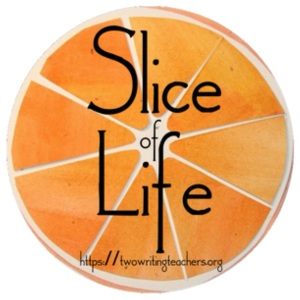
As Barbara Mowat, editor of the Folger Shakespeare Library student editions of the Bard’s plays, continued explaining hers and her co-editor’s decision for editing The Tragedy of King Lear as a conflated text, I and my cohort listened intently.
We also glanced in the direction of another scholar teaching us during our month at the 2008 Teaching Shakespeare Institute.
Professor Jay Halio stretched his legs out, folded his arms, leaned back in his chair, tilted his cowboy hat over his eyes and tried to bite his tongue. Until he could not hold back his opinion any longer.
That’s a play Shakespeare never wrote, Jay muttered.
I’m not sure exactly what Barbara said that broke Jay’s silence, but we all knew Barbara and Jay had been having the same academic debate over which text is the most authoritative version of Lear for many years.
Jay argued for the Folio edition. Barbara argued for a conflated text, one that takes the approximately 100 lines in dispute from the First Folio of Shakespeare’s plays and the 300 lines in dispute from the Quarto version of the play and combines (conflates) them into into a third text.
That’s a play Shakespeare never wrote reminds me of Kelly Gallagher’s argument about the so-called Five Paragraph Essay.
Gallagher argues this formulaic writing structure
doesn’t exist in the real world.
He challenges teachers to find five paragraph essays outside test-prep sites and stilted textbooks.
I don’t know when writing teachers reduced essay writing to five paragraphs, but I do recall a freshman text I used in college called Writing Themes about Literature offering numerous five paragraph examples. I’m sure I wrote essays with five paragraphs that year as I learned to analyze literature.
Last year while subbing in an English class I told a student not to write a five-paragraph essay before realizing their instructions in Google Classroom directed them to do just that. I had some serious backpedaling to do.
This year if a teacher leaves writing as a lesson plan I check to see what the directions they’ve assigned say.
Friends, I am struggling. I do not like reducing essay writing to five-paragraph essays, and almost always the teacher tells students what to write in each paragraph.
As a guest teacher it’s my job to implement the lesson the classroom teacher left. Regardless of my professional philosophy.
I honestly believe reducing essay writing to the five-paragraph structure steals joy from learners, and it has the nefarious effect of robbing them of opportunities to develop critical thinking skills.
Gallagher and others have written extensively on how to teach writing without reductive practices. Even before beginning my career I learned to think of essays as having parts: introduction, body, conclusion, aka, beginning, middle, end.
I learned one point in the body of an essay can have a minimum of one paragraph and as many as the writer deems necessary to develop that point fully. This is called a paragraph block.
A few days ago I wrote a poem as a way to process my professional angst after a day giving five-paragraph essay instructions.
Today I’ve written an essay, i.e. a blog post, illustrating the mythology of the five-paragraph essay in the real world because an essay is not a hamburger.
This essay is twenty paragraphs long. That’s a lot more than five.

*Featured image via Pixabay.
**Canva image via Wiki commons

I want to check out Gallagher. I know I’ve read about how to go beyond the five paragraph essay, and even though we say it at the elementary level, I feel like we always go back to five.
LikeLike
I agree with you 100%! I fortunately taught in a private school where we taught authentic writing, but my own children went to public elementary school where the scripted five-paragraph essay was king. I will never forget visiting my son’s class and seeing a piece written by one of his 3rd grade classmates. The assignment was to write about a vacation and this youngster had written his narrative in the five-paragraph essay format. I felt so sad.
LikeLike
This is very interesting. Thank you.
LikeLike
Glenda, oh, so true! You have spoken and illustrated this true with gusto here. Thanks! (And the more we write, the more we know this is the case. I feel bad for the young writers over the decades who only wrote five-paragraph essays until they gave up on the writing practice as a whole.)
LikeLike
I’d love to hear more about this. I love writing essays (and remember very clearly the lessons taught by my professors in college about authentic essay writing — including writing your whole essay before you write the introduction, giving headings to different sections, etc.), and I enjoy teaching essays, but I don’t know how to teach it in a non-formulaic way! Even the TC boxes-and-bullets and argument essay units are fairly straightforward. I’d love to read and learn more about how you’d approach this in the upper elementary grades!
LikeLiked by 1 person
Hi Amy,
I taught high school all but two years of my career and completely understand your point about argument, etc. I will write another post and share ideas. I’ll also recommend resources. I know the TWT team has lots of materials addressing authenticity in essay writing. I’ll look for them and include links.
LikeLiked by 1 person
Thank you so much!! I look forward to your post, and I’ll check out the TWT archive.
LikeLiked by 1 person
I am definitely familiar with the assignment of a five-paragraph essay, and the rare (zero?) find of this anywhere outside of a school assignment. I agree with you that “reducing essay writing to the five-paragraph structure steals joy from learners.” None of our slices are five paras. Maybe I will try to confine mine to that next week – and see what mess transpires.
LikeLike
YES! Shout this over and over, pease. 🙂
I love how what you wrote is an example of what you are articulating in your writing.
Something that I think about when I’m thinking about this issue of authentic writing in schools, is the idea that so much real world writing is a cross-section of genres… and we don’t seem to talk about that enough… like how narrative lives in information and opinion.. etc. etc.
I do understand that sometimes creating a more confined structure can help students organize, etc… as a scaffold … but the whole 5 paragraph thing (especially when also telling students what to write in each paragraph) feels like way too much of this.
I also understand the desire to prepare students for an assessment … but I think that can be its own genre study…
Obviously I have a lot of thoughts on this! Thank you for writing about it.
LikeLike
I remember learning the 5 paragraph essay is like a train – engine, car, car, car, caboose. And then I saw people teaching it as a hamburger. And it was a long time – post Bachelor’s Degree – before I felt brave enough to write essays that weren’t in that format. Now I never teach it -probably because I teach grade 3 and they don’t need this, but also because it’s a bad habit someone else will probably drill into them later and for now I just want them to love writing!
LikeLiked by 1 person
Glenda, I love the way you are able to pull the reader into your essays. The description of the Shakespeare class is brilliant. I agree with the 5 paragraph essay approach in the classroom and completely laughed at your comment about an essay is not a hamburger! Yes, I know the graphic well!
LikeLiked by 1 person